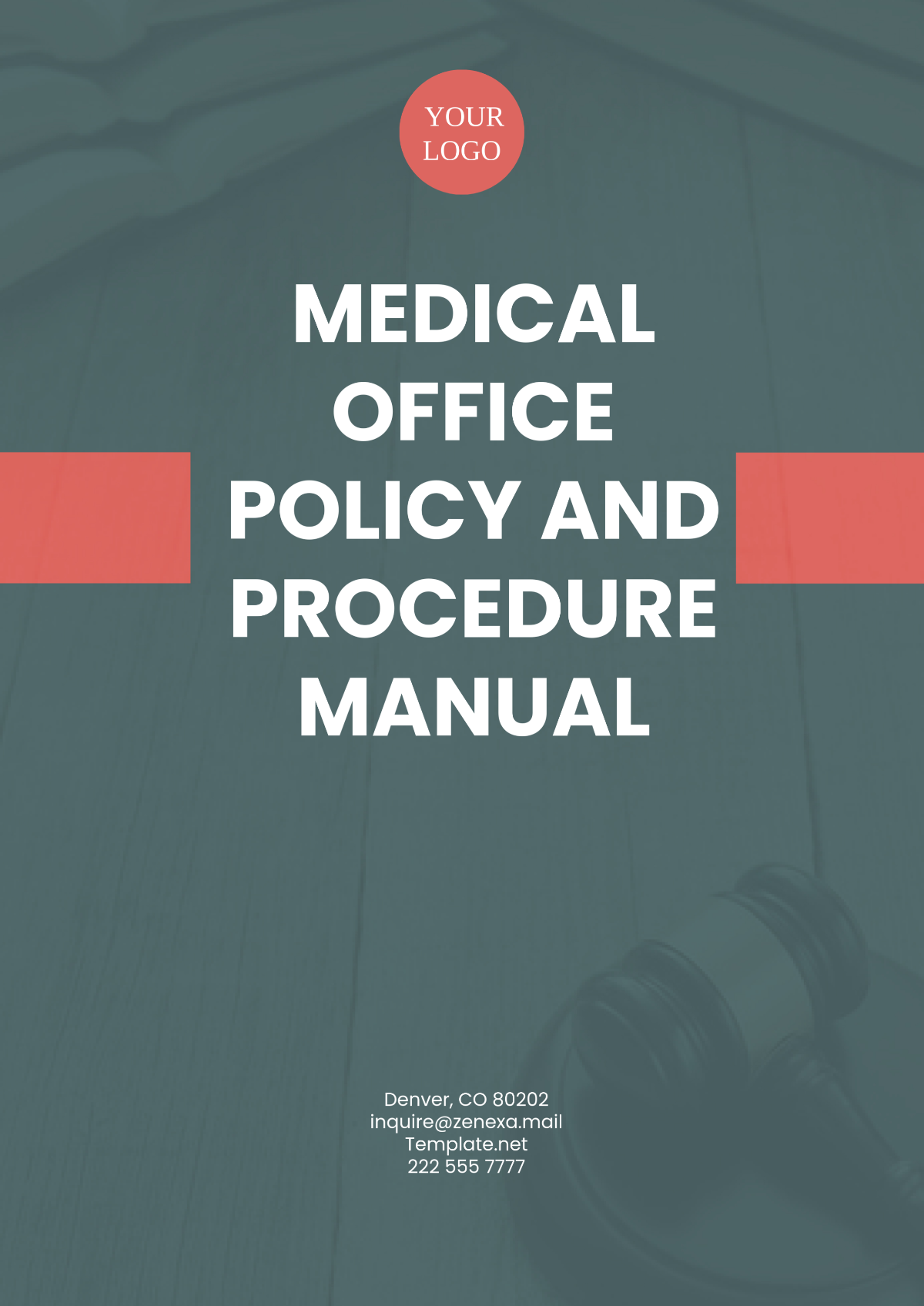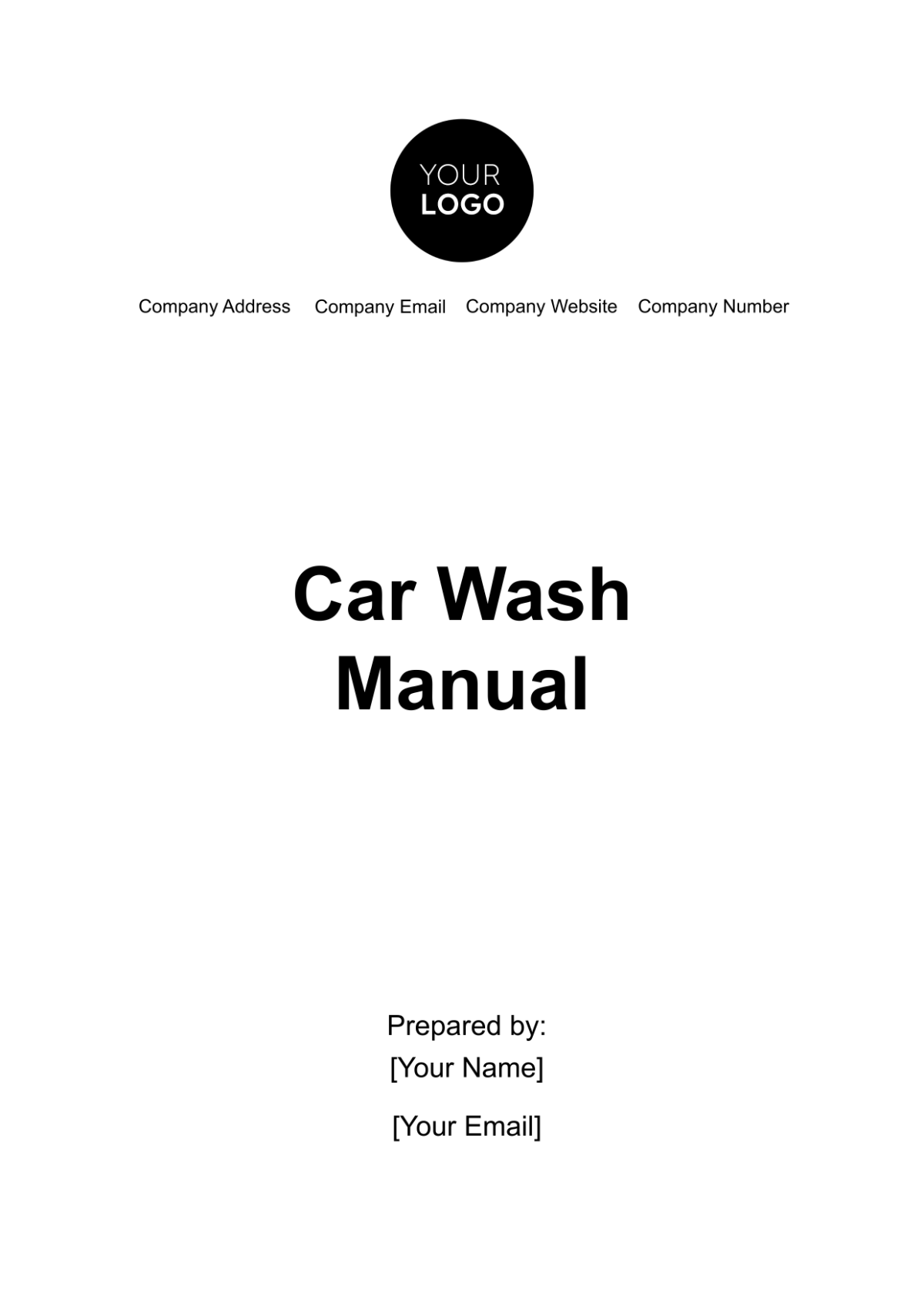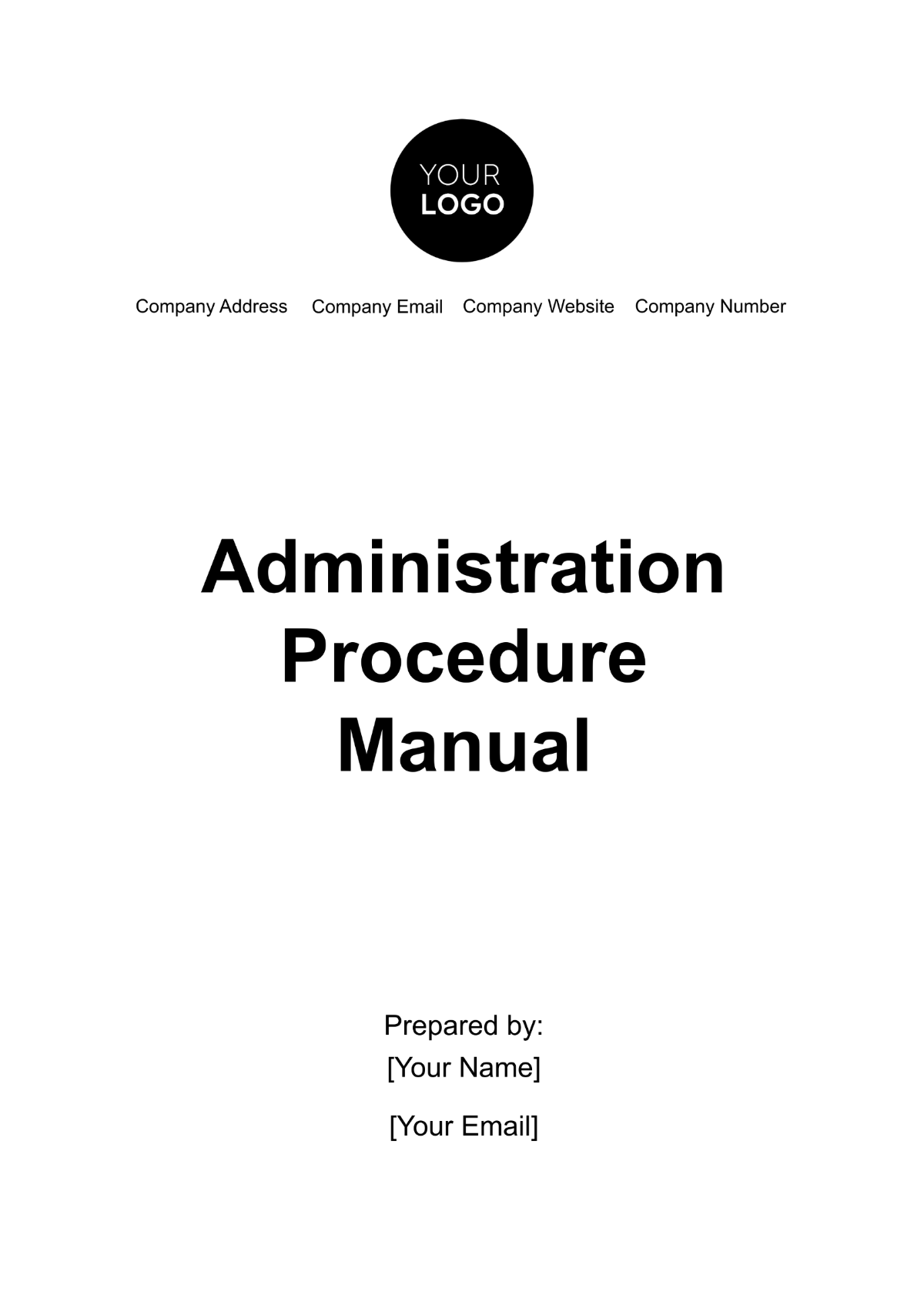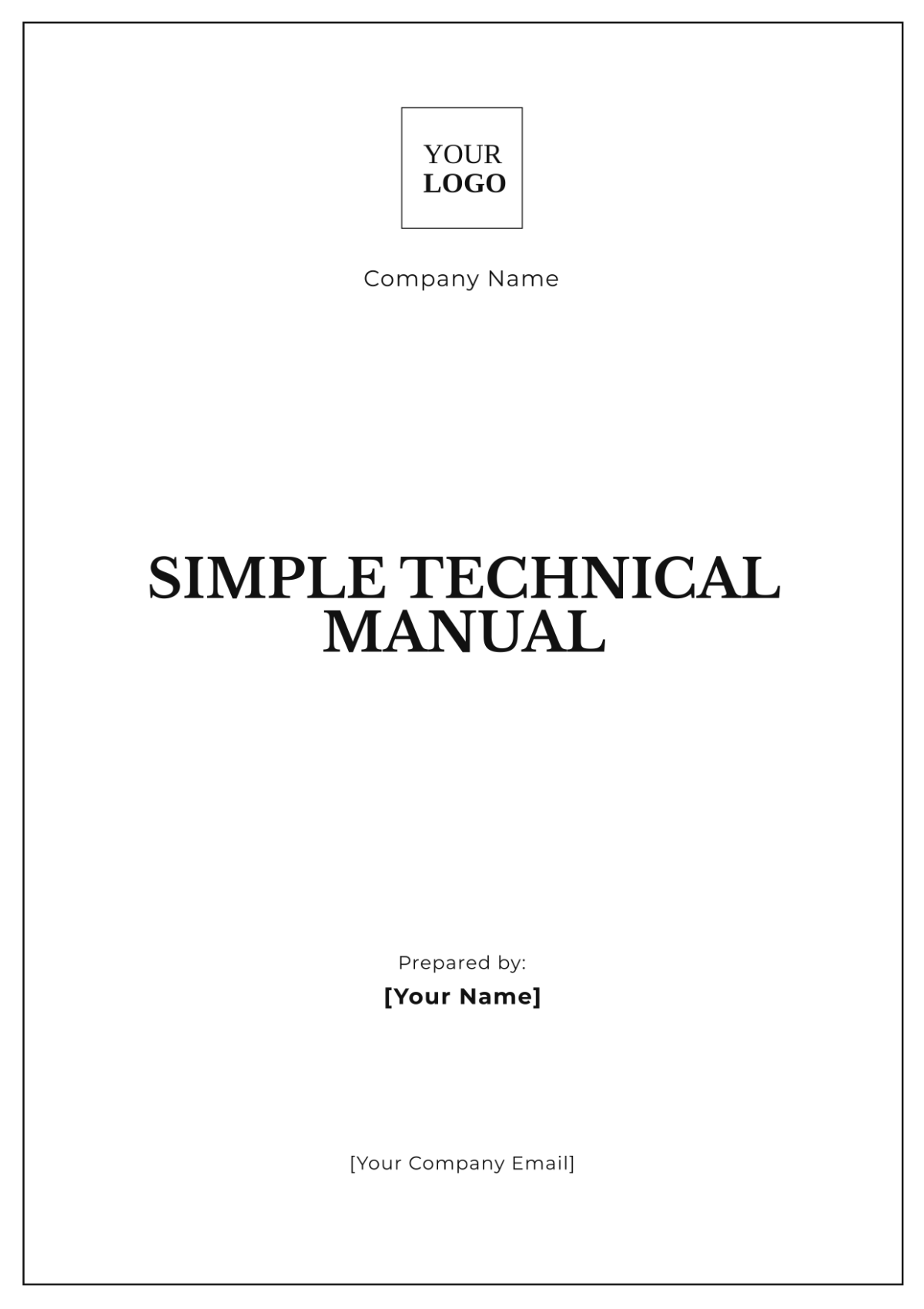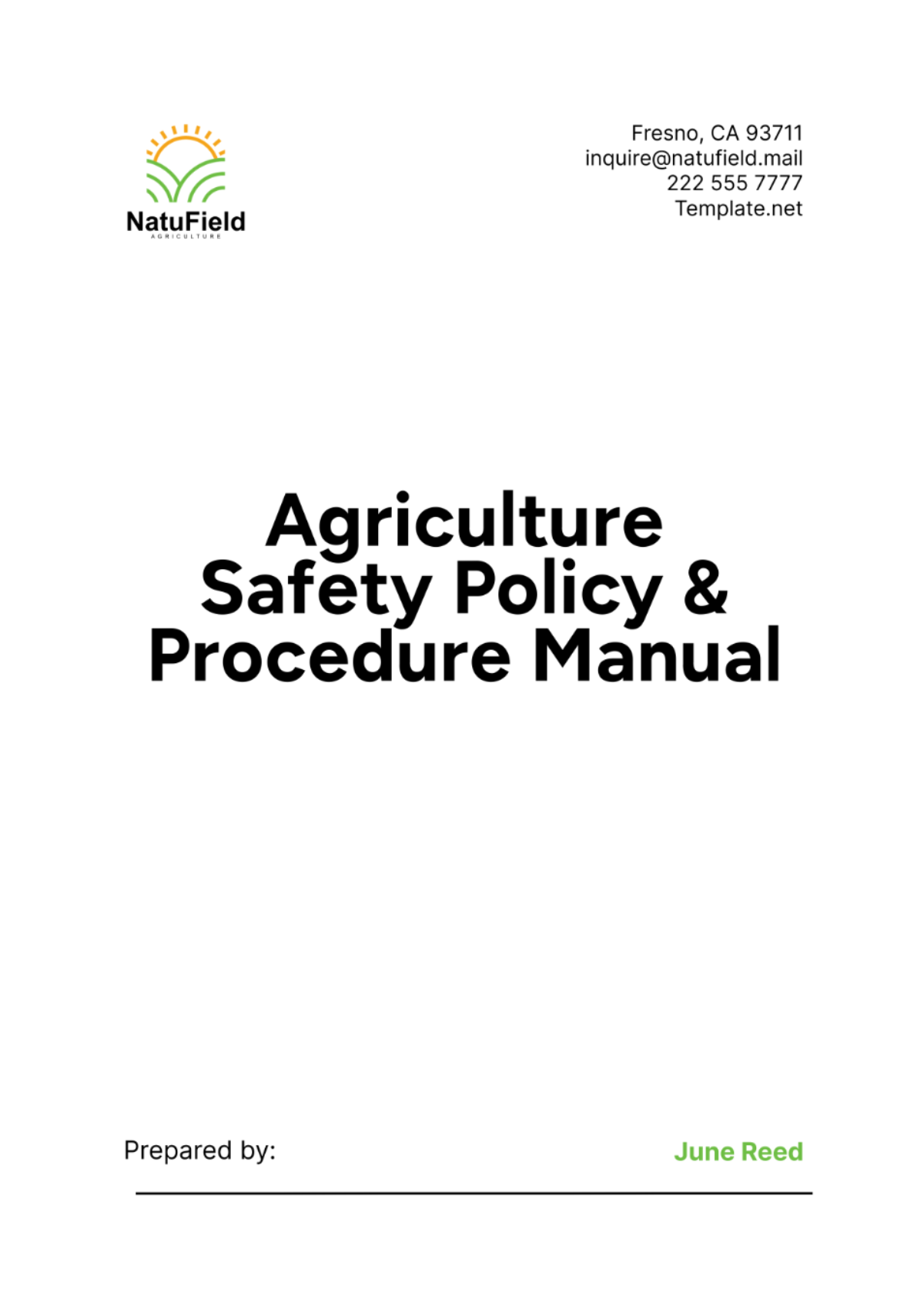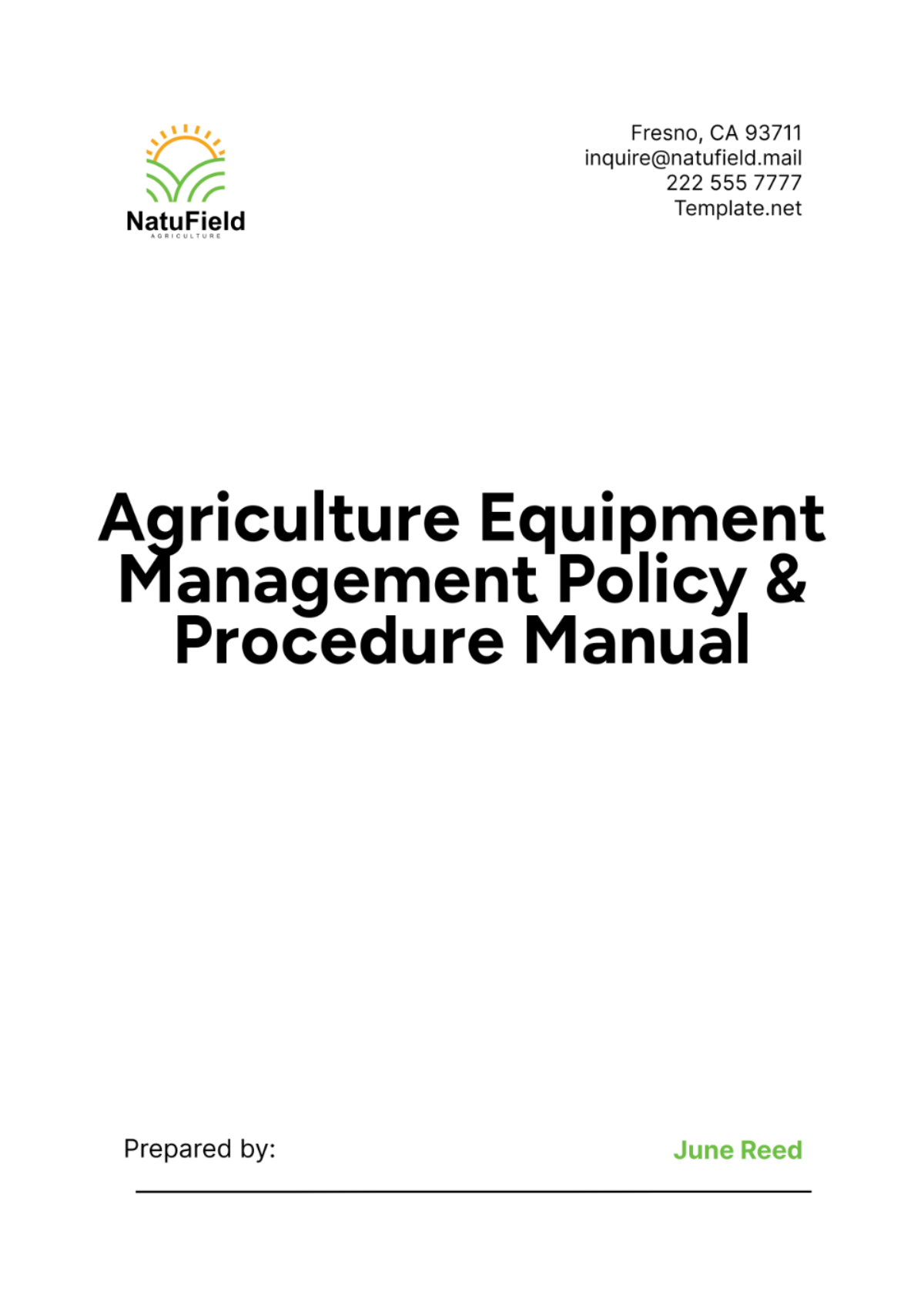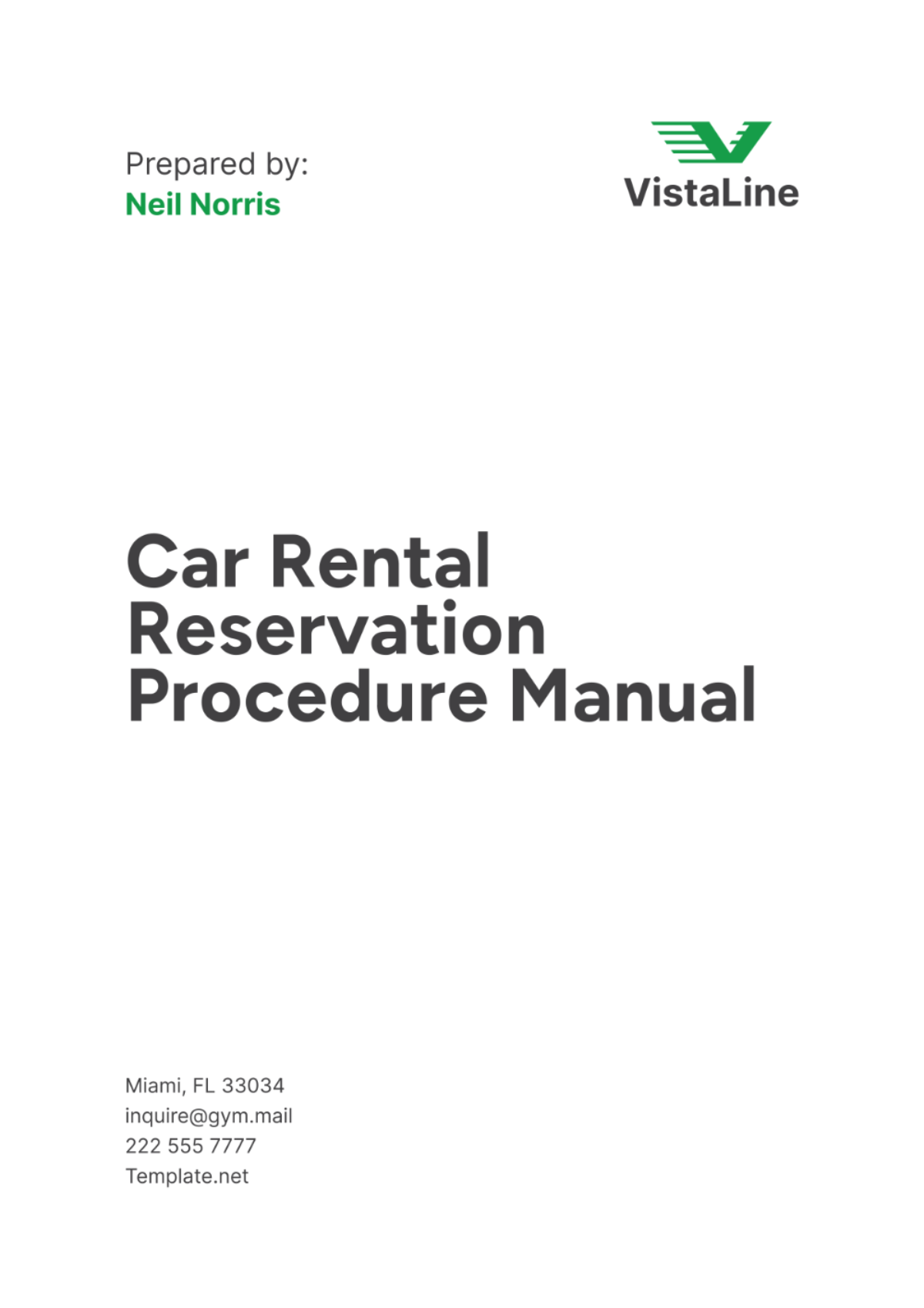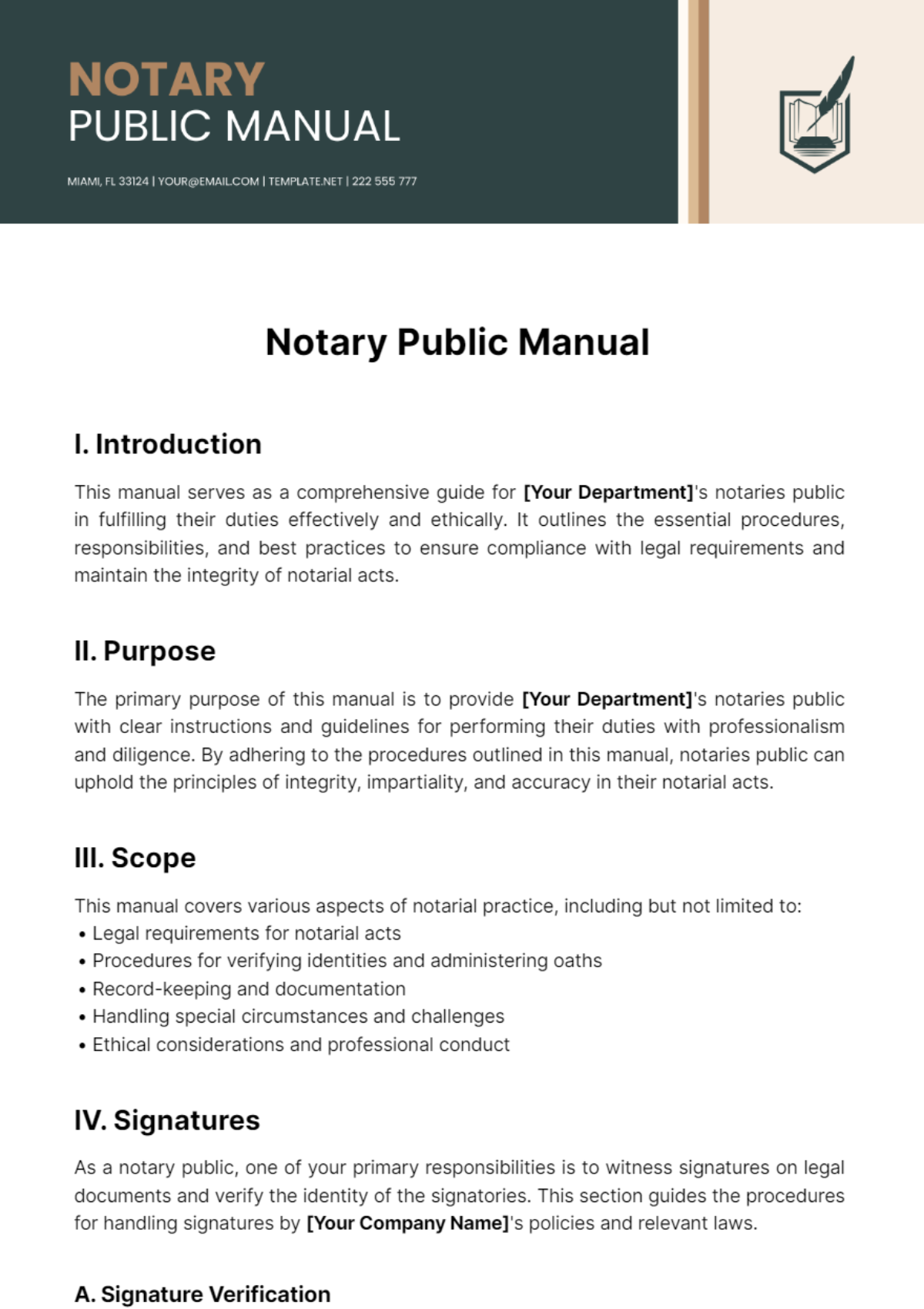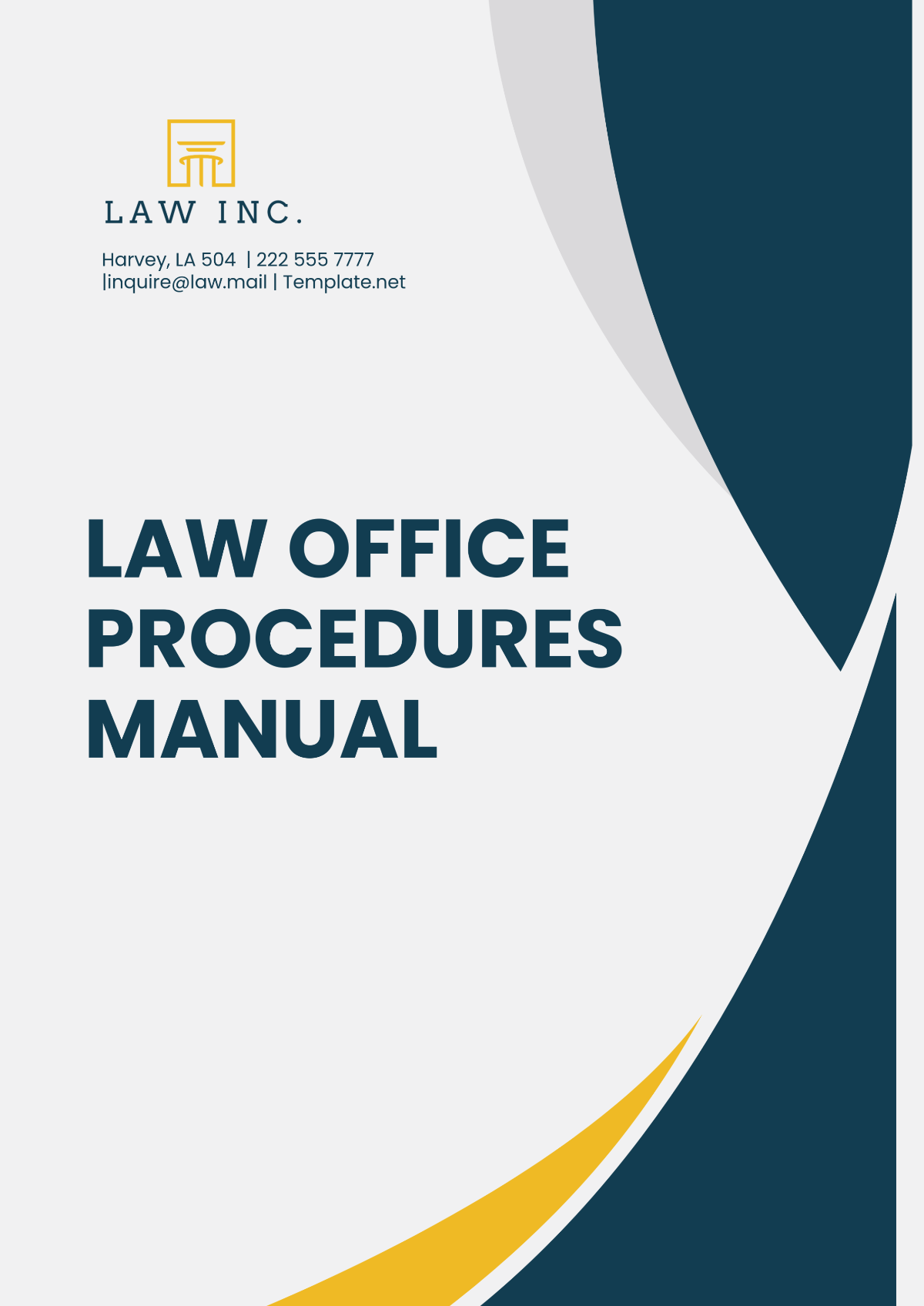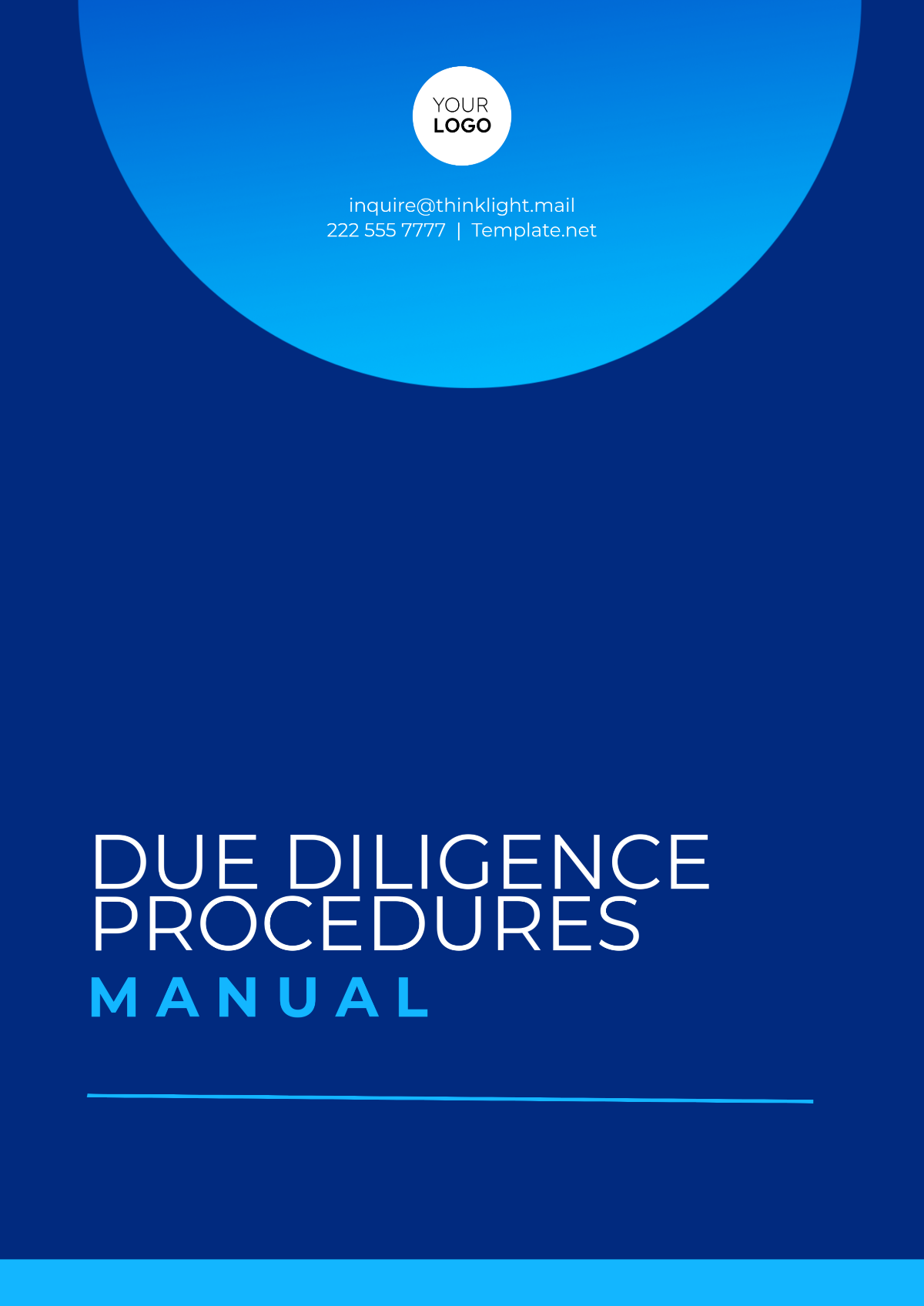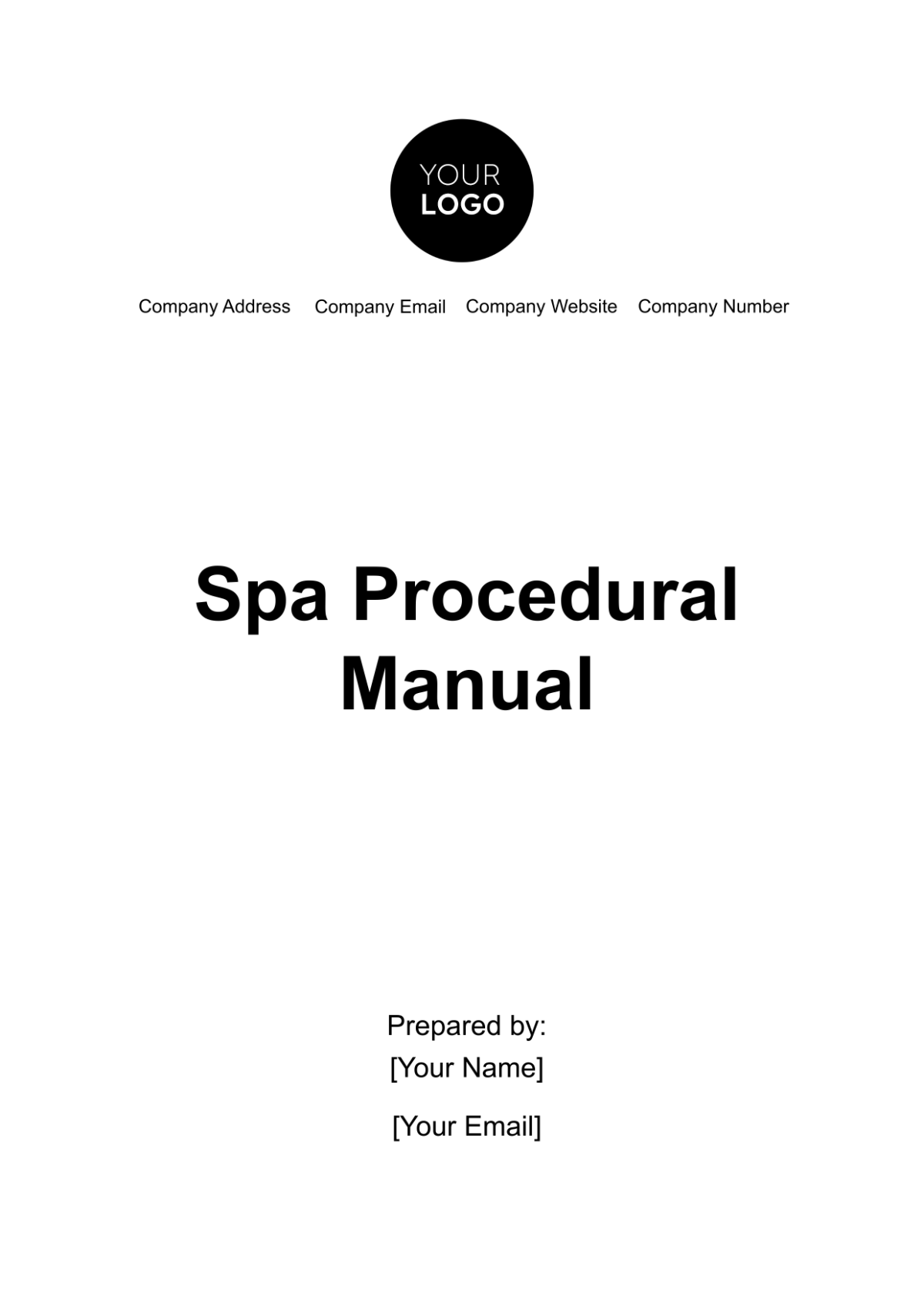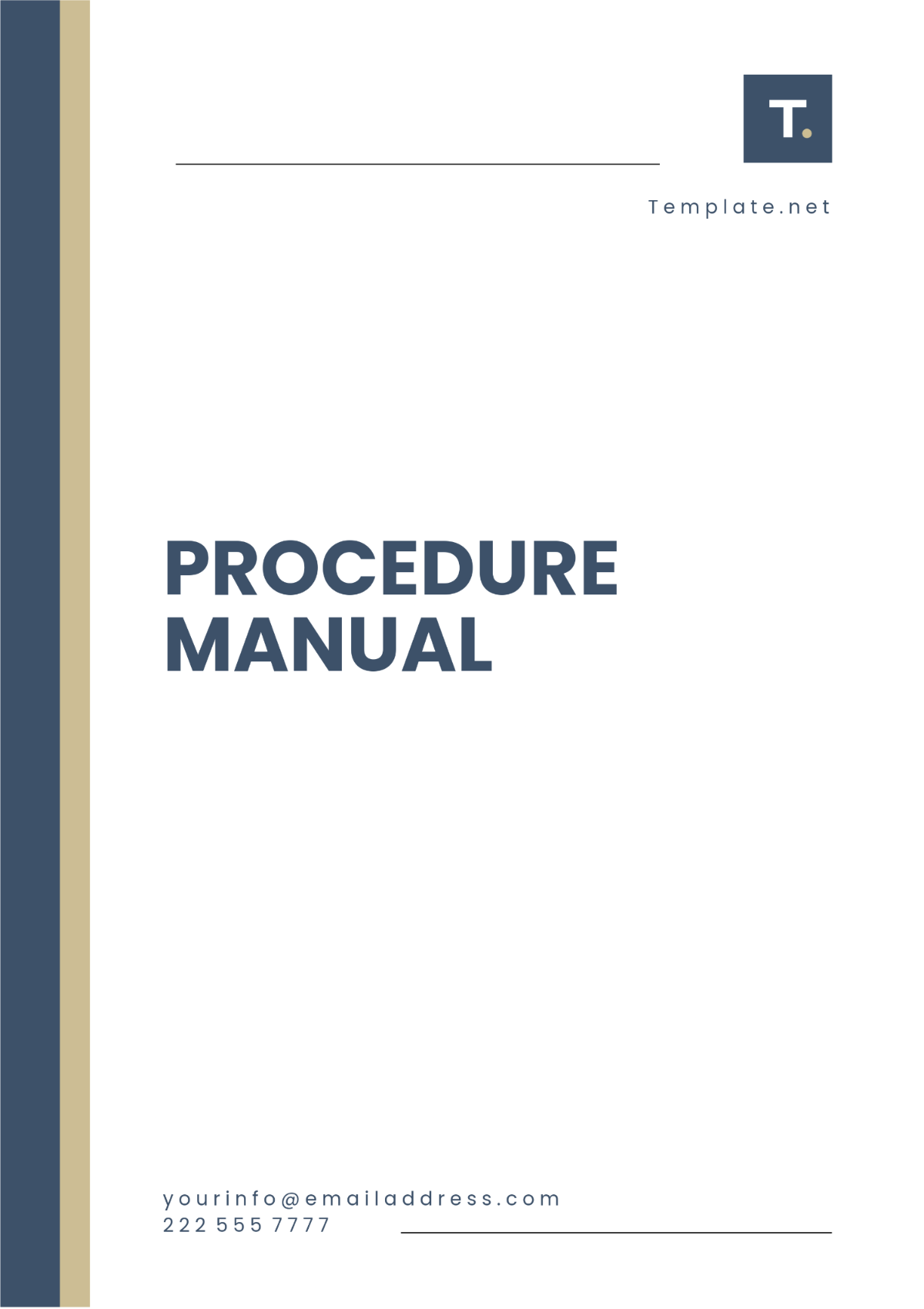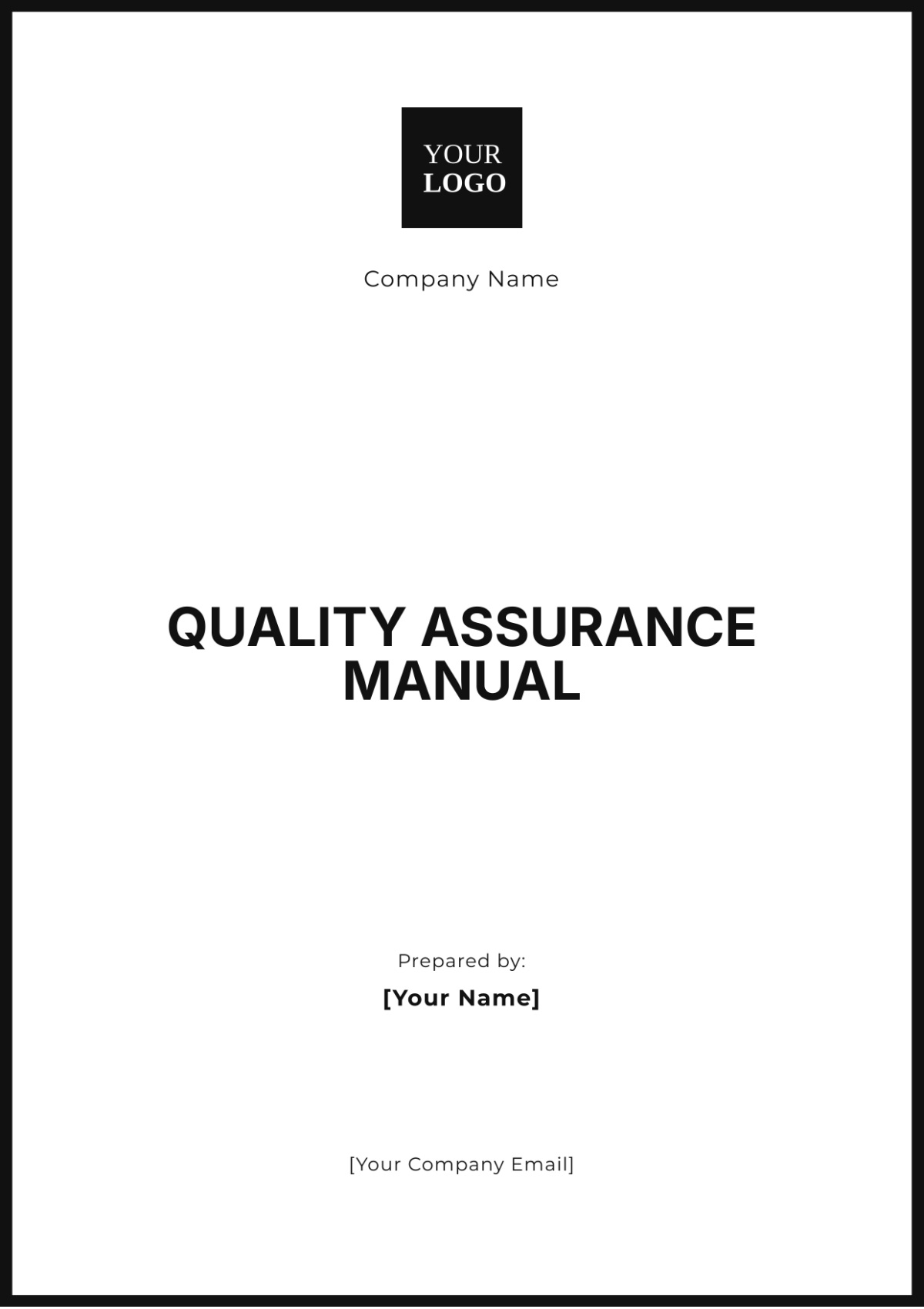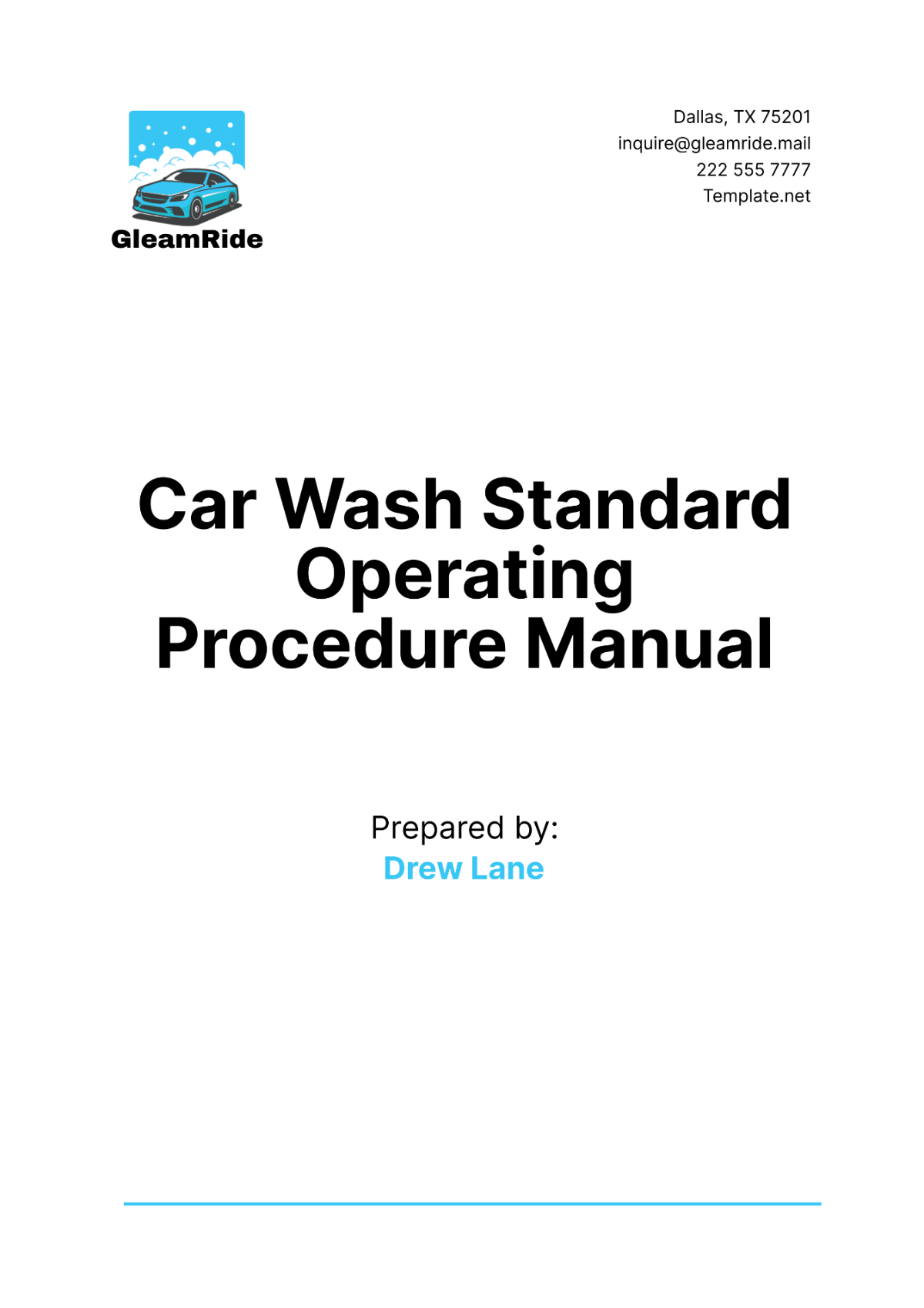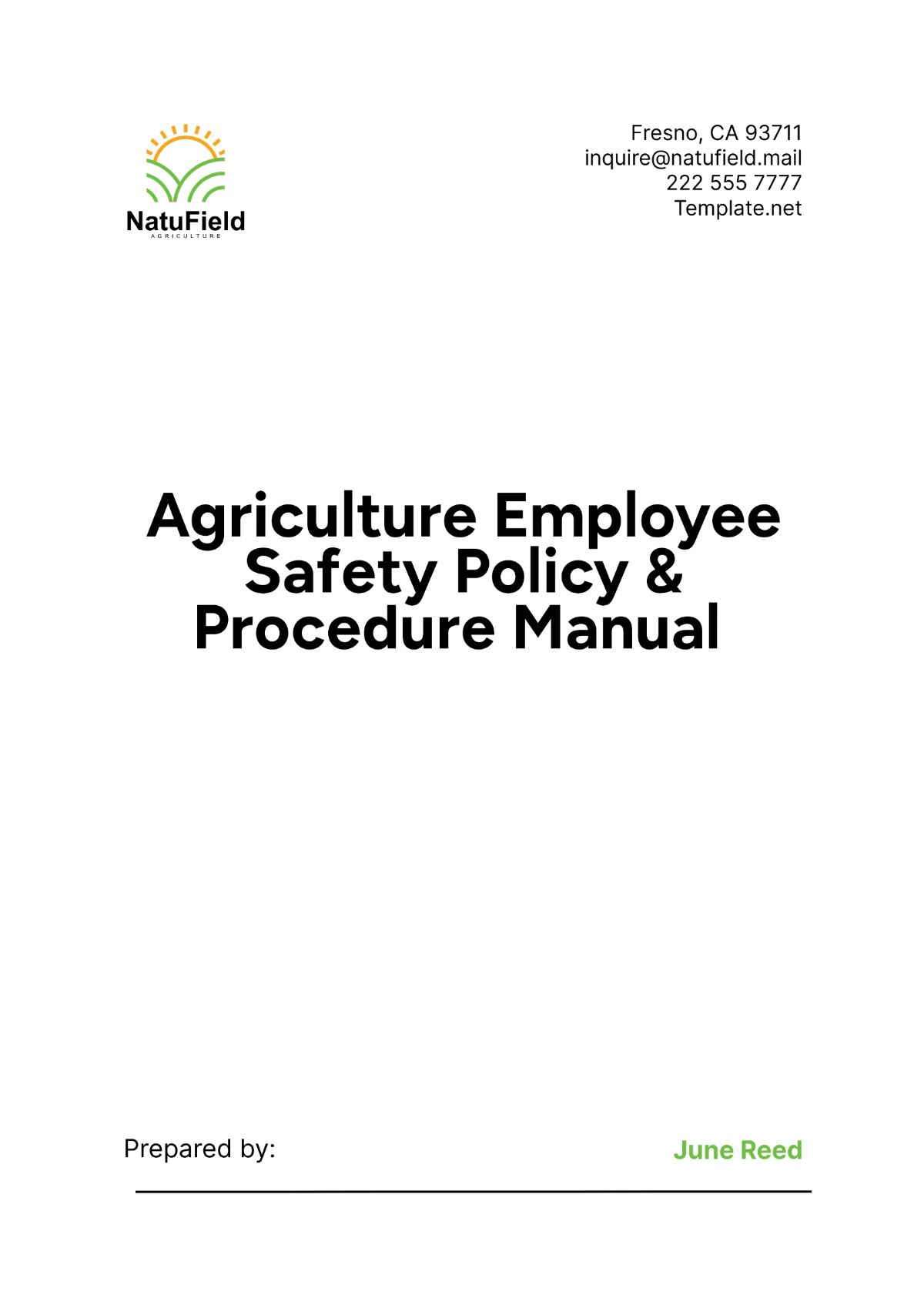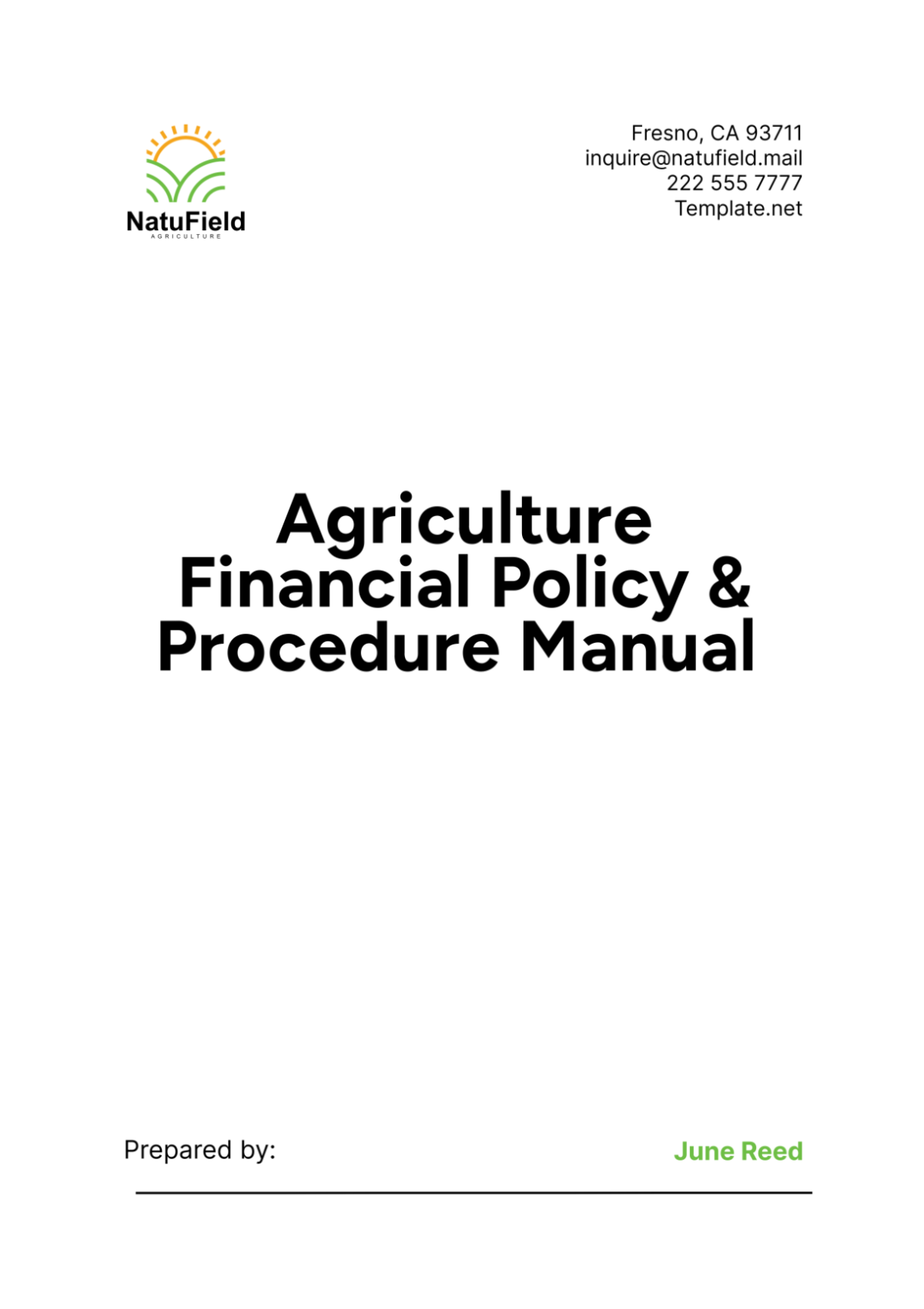Advertising Record-Keeping Protocol Manual
1. Introduction
1.1 Purpose of the Manual
The primary purpose of this manual is to provide a comprehensive guide to [Your Company Name]'s personnel involved in advertising activities. It serves as a roadmap for establishing, implementing, and adhering to stringent record-keeping practices. The manual outlines a series of policies, procedures, and delineates specific roles and responsibilities pertaining to record creation, maintenance, storage, retrieval, and compliance.
By adhering to the principles and protocols elucidated in this manual, [Your Company Name] aims to achieve the following objectives:
Transparency: Transparent record-keeping practices ensure that all advertising-related activities are documented accurately, fostering trust among stakeholders and regulatory bodies.
Accountability: The manual establishes a framework for clear roles and responsibilities, holding personnel accountable for their contributions to record-keeping processes.
Regulatory Compliance: Regulatory agencies often mandate meticulous record-keeping in the advertising industry. This manual ensures that [Your Company Name] complies with all relevant laws, regulations, and industry standards.
Risk Mitigation: A well-maintained record-keeping system minimizes the risks associated with legal disputes, financial discrepancies, and compliance failures.
Operational Efficiency: Effective record-keeping enhances operational efficiency by facilitating quick and accurate access to vital information, thereby streamlining decision-making processes.
1.2 Importance of Record-Keeping
In the dynamic and fast-paced world of advertising, record-keeping takes on a pivotal role. It serves as the backbone of our commitment to transparency, accountability, and regulatory compliance. Record-keeping ensures that every advertising endeavor, whether it's the creation of captivating content, the negotiation of crucial contracts, the management of financial transactions, or the handling of consumer interactions, is meticulously documented.
The importance of record-keeping within [Your Company Name] cannot be overstated. It allows us to:
Trace Our Steps: With meticulous records, we can trace the history and evolution of every advertising campaign, identifying successes, challenges, and areas for improvement.
Foster Trust: Transparent record-keeping fosters trust among our stakeholders, including clients, partners, and regulatory bodies, as it demonstrates our commitment to integrity and accountability.
Facilitate Audits: The availability of comprehensive records simplifies the audit process, enabling us to provide clear evidence of our compliance with laws and regulations.
Mitigate Risks: In the event of legal disputes, financial audits, or consumer complaints, our well-maintained records serve as our shield, allowing us to address issues proactively and mitigate risks effectively.
Drive Informed Decisions: Timely access to accurate records empowers our teams to make informed decisions, enhancing our ability to adapt and thrive in a competitive advertising landscape.
In essence, this manual underscores the significance of maintaining meticulous records, not only as a regulatory obligation but as a strategic advantage that supports our commitment to responsible advertising practices. It is a testament to our dedication to transparency, integrity, and excellence in the world of advertising.
2. Record-Keeping Policies
2.1 Legal and Regulatory Requirements
At [Your Company Name], our commitment to record-keeping extends beyond a mere formality; it's a fundamental pillar of our operations. We wholeheartedly dedicate ourselves to adhering to all relevant legal and regulatory requirements governing advertising record-keeping. This commitment encompasses local, national, and international laws and regulations that pertain to the meticulous documentation of our advertising activities.
Specifically, we diligently observe data protection regulations to safeguard the privacy and confidentiality of sensitive information. Our commitment to consumer protection regulations ensures that we maintain records related to consumer interactions and feedback, allowing us to address concerns with utmost responsiveness and care. Furthermore, our unwavering commitment to advertising standards regulations ensures that we maintain records that align with industry best practices, guaranteeing ethical and responsible advertising.
2.2 Internal Policies and Guidelines
In addition to our compliance with legal and regulatory mandates, we have established a comprehensive framework of internal policies and guidelines. These documents serve as the backbone of our record-keeping practices, providing a roadmap for our employees to follow. They go beyond the requirements of external regulations to define our internal expectations, procedures, and responsibilities regarding record creation, maintenance, and security.
These internal policies and guidelines outline our expectations for record completeness, accuracy, and consistency. They standardize our record-keeping practices, ensuring that every employee is on the same page when it comes to creating, managing, and safeguarding records. By adhering to these policies, we not only meet external requirements but also uphold our commitment to operational excellence and accountability.
2.3 Roles and Responsibilities
A critical aspect of effective record-keeping is the clear definition of roles and responsibilities. Within our record-keeping policies, we delineate the specific roles and responsibilities of employees and teams who are directly or indirectly involved in various facets of record creation, storage, retrieval, and compliance.
These defined roles ensure that accountability is woven into the fabric of our record-keeping protocols. By explicitly stating who is responsible for what, we mitigate the risk of oversights and ambiguities. In essence, clear roles and responsibilities are the linchpin of our record-keeping effectiveness, ensuring that every team member understands their part in this vital aspect of our operations.
In sum, our record-keeping policies serve as a testament to our dedication to regulatory compliance, operational excellence, and the preservation of the integrity of our advertising endeavors. Through adherence to legal mandates, robust internal guidelines, and the assignment of clear roles, we solidify our commitment to meticulous and responsible record-keeping.
3. Types of Records
3.1 Advertising Content Records
Within the realm of advertising, a treasure trove of records awaits diligent documentation. Chief among these are our advertising content records. These records encompass a comprehensive view of our creative endeavors. They include every aspect of the content creation process, from the inception of ideas to the dissemination of advertising materials.
In essence, advertising content records encapsulate the essence of our campaigns. This category includes copies of advertisements in various formats, such as text, images, audio, and video. It extends to the documentation of scripts and storyboards, offering insights into the creative process that drives our campaigns. Additionally, these records house multimedia files used in our advertising materials, providing a repository for the assets that breathe life into our campaigns. Finally, engagement metrics are meticulously recorded, offering a data-driven perspective on how our audience interacts with our advertising content.
3.2 Contracts and Agreements
Contracts and agreements constitute a critical component of our advertising operations. These records encapsulate the formalized agreements that govern our relationships with various stakeholders within the advertising landscape. They form the contractual backbone of our endeavors, ensuring clarity, accountability, and legal compliance.
Within this category, we maintain records of contracts entered into with advertising agencies, media outlets, influencers, and any third-party service providers. These contracts encompass a broad spectrum of arrangements, including but not limited to marketing collaborations, advertising placements, and creative services. Our meticulous record-keeping in this domain extends to the documentation of negotiations, terms, and any amendments made to these contracts over time.
3.3 Financial Records
Financial records are the ledger of our financial transactions in the realm of advertising. They are the compass that guides our financial stewardship, ensuring that budgets are adhered to, payments are processed transparently, and our financial reports align with regulatory standards.
This category encompasses a range of financial documents, including budgetary plans that outline the allocation of financial resources for advertising campaigns. It extends to invoices and payment receipts, documenting the financial transactions that underpin our advertising efforts. Furthermore, our financial records include detailed financial reports, which offer a comprehensive view of the financial performance of our advertising activities. Transparent financial record-keeping ensures accountability and regulatory compliance, reinforcing our commitment to financial integrity.
3.4 Consumer Feedback and Complaints
Central to our advertising ethos is the genuine concern for consumer sentiment and satisfaction. Records of consumer feedback and complaints are integral to this commitment. These records offer a direct line of communication with our audience, allowing us to gauge their experiences, concerns, and suggestions.
Within this category, we document correspondence with consumers, including surveys, reviews, and customer service interactions. By maintaining a record of consumer feedback and complaints, we demonstrate our proactive approach to consumer engagement. These records are essential for monitoring consumer sentiment, identifying areas for improvement, and addressing concerns promptly. Ultimately, they serve as a testament to our dedication to consumer-centric advertising practices.
4. Record Creation and Maintenance
4.1 Record Creation Process
The record creation process is a meticulously structured endeavor at [Your Company Name]. To ensure consistency, completeness, and systematic record creation, we provide detailed guidelines that serve as a beacon for our personnel at every stage of advertising campaigns.
Within these guidelines, we offer templates that serve as a foundation for record creation. These templates standardize the format, structure, and content of our records, ensuring that no crucial details are overlooked. Additionally, we prescribe naming conventions that facilitate the easy identification and retrieval of records, further enhancing the efficiency of our record-keeping processes.
Moreover, our guidelines include the identification of mandatory data fields that must be populated during record creation. These mandatory fields ensure that essential information is captured without fail, minimizing the risk of incomplete records. In essence, our systematic approach to record creation guarantees that every record we generate adheres to a standardized framework, embodying our commitment to meticulous documentation.
4.2 Data Security and Privacy
Safeguarding the security and privacy of our records is a non-negotiable imperative. We recognize the sensitivity of the information we maintain and take a proactive stance on data security and privacy. Our stringent data security measures are designed to fortify the confidentiality and integrity of our records.
These measures encompass state-of-the-art encryption protocols, which are employed to shield sensitive information from unauthorized access or breaches. Access controls are diligently enforced, ensuring that only authorized personnel can interact with our records. Furthermore, we adopt a comprehensive data classification system, categorizing records based on their sensitivity and applying the appropriate security measures accordingly.
By adhering to these robust data security measures, we guarantee the protection of our records from potential threats and breaches. Our commitment to data security and privacy is a testament to our dedication to responsible record-keeping practices.
4.3 Record Retention Periods
The lifespan of our records is governed by clear and well-defined record retention periods. These periods are not arbitrary but are carefully aligned with legal requirements and industry standards. This ensures that records are retained for an appropriate duration, striking a balance between maintaining necessary information and managing data in a responsible manner.
Our guidelines outline these retention periods, providing clarity on how long specific types of records should be preserved. This adherence to retention periods serves as an essential component of our compliance efforts, allowing us to fulfill legal obligations and industry expectations while preventing unnecessary data accumulation.
4.4 Archiving and Destruction
Records, like all aspects of our advertising operations, are subject to evolution and change. When records reach the end of their retention periods, they undergo archiving and destruction processes. These processes are meticulously managed to align with legal and regulatory requirements.
Guidelines for archiving and destruction are provided to ensure that these processes are conducted with precision and responsibility. Records selected for archiving are preserved in a secure and accessible manner, allowing us to meet any potential future needs, such as audits or legal inquiries. On the other hand, records designated for destruction are disposed of in a manner that complies with data protection regulations, preventing unauthorized access and breaches.
In sum, our approach to record creation and maintenance reflects our dedication to systematic, secure, and responsible record-keeping practices. This ensures the longevity, integrity, and utility of our records, bolstering our commitment to transparency, accountability, and regulatory compliance.
5. Access and Retrieval
5.1 Authorized Personnel
Access to our records is a privilege reserved for authorized personnel only. We prioritize security and confidentiality by delineating strict criteria for granting access to records. These criteria include roles and responsibilities, permissions, and authentication methods.
Within this section, we provide clear guidance on the specific roles and positions that are granted access to records. We define the permissions associated with each role, ensuring that individuals have the appropriate level of access commensurate with their responsibilities. Authentication methods are also outlined to guarantee that only authorized individuals can access records.
Unauthorized access is categorically prohibited. Our stringent measures are designed to uphold the integrity of our records and protect them from potential breaches or misuse.
5.2 Retrieval Procedures
Efficient and secure access to records is a paramount consideration at [Your Company Name]. To this end, we have established clear procedures for retrieving records. These procedures serve as a roadmap for personnel, guiding them on how to request, locate, and retrieve records swiftly and accurately.
Personnel are provided with step-by-step instructions on how to initiate record retrieval requests. They are informed about where records are stored, both physically and digitally, and how to navigate these repositories. This ensures that personnel can access records seamlessly whenever the need arises, whether it be for legal, audit, or operational purposes.
5.3 Access Logs and Monitoring
We place a premium on accountability and transparency in our record-keeping practices. To this end, we maintain detailed access logs that track who accesses records, when these accesses occur, and the purpose behind each access. These access logs are a vital component of our security and monitoring framework.
Routine monitoring of access logs is an essential practice at [Your Company Name]. This ongoing scrutiny helps us identify any unusual or unauthorized activity promptly. By monitoring access logs, we bolster security measures and hold personnel accountable for their interactions with records. This proactive approach enhances our overall security posture and ensures that our records remain protected and confidential.
6. Audit and Compliance
6.1 Regular Audits
At [Your Company Name], accountability and compliance are paramount. To uphold these principles, we conduct regular audits of our record-keeping practices. These audits serve as a litmus test, assessing our adherence to both legal requirements and internal policies.
During these audits, the accuracy, completeness, and integrity of our records are scrutinized. We leave no stone unturned in ensuring that our records reflect the highest standards of meticulous documentation. These audits are an integral part of our commitment to transparency and regulatory compliance.
6.2 Compliance Checks
Compliance checks are seamlessly woven into the fabric of our record-keeping processes. We believe that compliance is not an occasional activity but an ongoing commitment. As such, we integrate compliance checks into our routine operations.
These checks involve periodic reviews of our records to verify that they align with regulatory standards and our internal guidelines. By embedding compliance checks into our daily activities, we proactively identify and rectify any deviations, ensuring that our records consistently meet the required standards.
6.3 Corrective Actions
In the event that audits or compliance checks uncover non-compliance or deviations from established standards, we take swift corrective actions. This section outlines the procedures we follow when addressing and rectifying issues identified during these processes.
Our commitment to responsible record-keeping extends to promptly resolving any issues that may arise. Corrective actions are meticulously designed to rectify non-compliance and prevent recurrences. We view these actions as a pivotal part of our continuous improvement efforts, reinforcing our dedication to maintaining the highest standards of record-keeping.
7. Training and Awareness
7.1 Employee Training
Our commitment to meticulous record-keeping is only as strong as our team's understanding and adherence to our policies and procedures. To ensure that every member of our team is well-equipped, we provide comprehensive training on record-keeping policies and procedures.
Employee training programs are designed to impart a deep understanding of the intricacies of record-keeping. They cover the entire spectrum of our policies, from the creation of records to their secure storage and responsible disposal. These programs emphasize the responsibilities of each employee in maintaining meticulous records and underscore the critical importance of this function in our operations.
7.2 Awareness Programs
We believe that fostering a culture of compliance and responsibility is an ongoing endeavor. To this end, we institute awareness programs that keep our employees informed and engaged. These programs serve as a conduit for disseminating critical information regarding updates, changes in regulations, and best practices in record-keeping.
Awareness programs ensure that our team remains up-to-date with the latest developments in the field of record-keeping. They instill a sense of responsibility and ownership among employees, reinforcing the role each individual plays in our commitment to meticulous record-keeping. By staying informed and aware, our team collectively contributes to our culture of compliance and responsibility.
7.3 Reporting Concerns
Transparency and open communication are integral to our approach to record-keeping. To facilitate this, we have established a mechanism for reporting concerns related to record-keeping. We encourage all employees to speak up if they encounter issues, discrepancies, or potential violations during the course of their work.
This mechanism serves as a vital channel for employees to express their concerns, knowing that their feedback is valued and will be acted upon. Reporting concerns is not only an opportunity to rectify issues promptly but also a demonstration of our commitment to continuous improvement. It ensures that our record-keeping practices remain robust and responsive to the evolving needs of our organization.
8. Appendices
8.1 Record-Keeping Checklist
A checklist is provided to guide personnel through record-keeping processes, ensuring that all necessary steps are followed.
8.2 Legal References
A compilation of legal references and regulations related to advertising record-keeping is included to provide context and guidance.
8.3 Data Classification Policy
This policy outlines how records are classified based on sensitivity and the corresponding security measures.
8.4 Sample Record Retention Schedule
A sample retention schedule is provided, specifying the retention periods for various types of records.
8.5 Access Log Template
A template for maintaining access logs is included to assist in monitoring and tracking record access.












